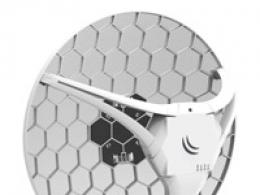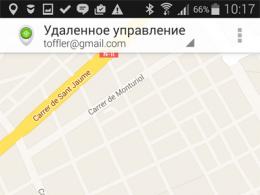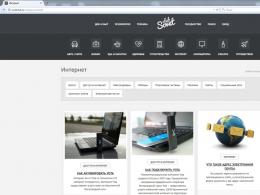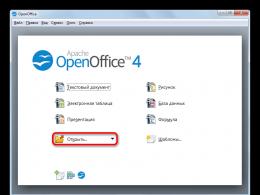Equipment of intermediate stations by electrical interlocking of switches and signals. Brief characteristics of the station Interlock scheme and layout plan
Blocks at BMRC are placed on a stylized single thread plan station, which indicates: the numbering and specialization of receiving and departure routes; numbering of switches, switch-track and non-switch sections; all main iso-junctions, repeaters of input main and additional traffic lights, as well as output combined with shunting and repeaters of shunting traffic lights are placed; signal buttons for train and shunting signals are placed, located on 1 sheet of the course project.
The blocks of the typesetting group are designed according to typical circuit nodes and are indicated on the plan in a shaded rectangle and are indicated:
NPM - a stacked train shunting block, installed 1 at the input traffic light and the first shunting one after it, 1 at the output traffic light combined with the shunting one and for the shunting traffic light from the path where there is a final train button.
HMI - type-setting shunting, for a single intermediate station in the neck of the station, the area of approach to which is the turnout section.
NMIIP - type-setting shunting, for shunting from dead ends, one of the shunting from a section of the track in different directions, one of the shunting, standing in the alignment.
NMIIIAP - type-setting shunting, for the second of the shunting stations located in the alignment, for the second of the shunting stations from a section of the track in different directions.
НСОх2 - Type-setting switch block, for two single switches.
NSS - a type-setting block of paired arrows. One is put on the congress.
Additional blocks are installed outside the station plan:
NMID - type-setting additional shunting, set at the rate of one for six NM I blocks.
HH - a stacking block of the relay of directions, one is installed on the one working behind the device and one backup HHr.
BDSH - diode plug-in block, installed in the NMSh relay housing, where there are 20 diodes for circuit decoupling of the UK angular relay.
Executive group in the BMRC system.
P - track block, large, installed on each receiving-departure track.
B1 and VD - blocks of output and additional output traffic lights, large sizes, are installed for each output traffic light combined with a shunting one, and block V1 is located closer to block P than VD.
C - switch block, small size, one is installed for each switch.
SP - switch and track block, large, one is installed for each switch and track section.
UE - a block of a track section, large, one is installed for each arrowless section.
VD - additional input block - large, one is installed for each main and for each additional input traffic light.
MIII - shunting block, large, installed for each shunting traffic light from a section of the track or from the receiving / departing track.
MII - shunting block, large, installed on each shunting traffic light from a dead end, for each of the shunting traffic lights in the alignment.
MI - shunting block, large size, installed for each single shunting traffic light in the neck of the intermediate station, the area of approach to which is the turnout section.
Blocks installed outside the station plan.
PS - starting pointer block, large sizes. PS-220M is installed one for two single turnouts or one for two ramps or one for a ramp and one turnout.
Relay interlocking devices, made in the form of standard blocks of typesetting and executive groups installed at the EC post, were called block route-relay interlocking BMRTS. The use of BMRC at stations allows to reduce the design time by 35-40% and significantly reduce the amount of design documentation. LMRC at the construction stage allows up to 70% of installation to be performed in the factory, which significantly improves the quality of work, reduces the amount of installation work (works on construction and the time for commissioning centralization devices. The quality of service for devices in operation is improved. All units are made with a plug connection and installed on special cabinets.
The BMRC design process is reduced to obtaining electrical circuit stations by arranging and interconnecting blocks of the route set and blocks of installation and opening of routes.
Schemes are drawn up using two-position single-contact buttons. The task of any route is carried out by pressing the buttons for the beginning and end of the route. A variant route is set by successively pressing the initial, intermediate and final buttons. Nine types of blocks are used to build route dialing schemes:
1. HM1 - control unit for single shunting traffic lights in the neck of the station "; the unit is also used for the option button.
2. NM1D - an additional block for controlling single traffic lights.
3. nmip - block for controlling a shunting traffic light from a dead end, from the track, for one or two traffic lights in the alignment or from a section of the track.
4. NM11AP - control unit for the second shunting traffic light in the alignment or from the track section.
5. NPM-69 - control unit for input and "shunting traffic lights from the section of the track behind (input, output or route traffic lights").<
6. НСОх2 - control unit for two single arrows.
7. NSS - control unit for twin arrows. "8. HH - block kit 1 relay (directions.
9. NPS - block for sequential transfer of arrows with main power supply.
The main circuits of the route set are assembled from blocks of the above types and represent: a circuit of push-button relays; scheme of automatic push-button relays; direction relay diagram; control pointer relay diagram; laughter conformity.
There are blocks of the following types for constructing schemes of the executive group:
1) IN 1 And VD - carry out control of the output traffic light in one direction and provide signaling with red, yellow, green and moonlight white lights;
2) VC And VD - control the exit traffic light in two directions. | In this case, signaling is provided at the traffic light: red, yellow, green, two green (or two yellow), moonlight white lights 1;
3) B111 And VD - control the output traffic light with a four-digit signaling: red, yellow, green, yellow with green, white lights;
4) M1 - controls and manages a single shunting traffic light, the area of approach to which is an insulated turnout section;
5) MP- controls the indication and controls the traffic light from the dead end, as well as the shunting traffic light, which is in alignment with the shunting traffic light of the other direction
6) M111- controls the traffic light from the section of the track in the neck of the station or / from the receiving-departure track;
7) P- controls the state of the receiving-departure track, excludes oncoming hostile routes and controls the entry of the train onto the route;
8) SP- controls the state of the turnout track section, the closing and opening of the turnouts;
9) UP - controls the state of the arrowless track section;
10) PS220A - starting pointer block, translates and controls the arrows;
11) FROM - switch switching unit, carries out switching of circuits in accordance with established routes and gives control of the switch to the console. Each of the paired arrows has its own block C;
On fig. 29 shows a plan of an exemplary station with a breakdown into isolated sections and the arrangement of traffic lights. Under the plan of the station, the location of buttons and blocks is shown.
In this system, the entire route is automatically disconnected in the event of a forced traffic light overlap. Opening occurs with a time delay, the duration of which depends on the state of the pre-route section. If it is free, then the time delay; is 6 s, if busy, then 3-4 minutes for train and 1 minute for shunting traffic lights.
During the time delay, the free state of all sections included in the route is continuously checked. If the rolling stock occupies sections of the route during the delay period, the operation of the route cancellation scheme is interrupted and the route remains closed.
The presence of such a principle significantly increases the performance of the system, and the use of artificial cutting buttons to cancel routes is excluded. Artificial cutting buttons are used only in cases where, after the passage of the train along the route, a false employment of any section remains.
>BMRC applied the principle of section-by-section opening of routes. In trip circuits, the control is provided:
opening the previous section, train entry into this section, its release and entry of the train into the next section. Each switch isolated section has two routing relays connected according to the same scheme. Depending on the direction of movement, one of the route relays controls the opening of the previous section And- the employment of this section, the other is the release of this and the employment of the subsequent sections. Route relays are installed in blocks joint venture And At P. A direct repeater of route relays is relay 3 installed in the block joint venture“and- closing arrows in the route.
As control devices, a trough-type panel-board or a remote-manipulator with a remote panel is used.
BMRC is the first link in the chain of complete automation of the station. The use of automatic routing devices will make it possible to free the station attendant from this work and switch all of it (attention to the operational work of the station.
To simplify the design of devices, reduce the time of installation work, improve maintainability during operation at the station, relay-route centralization of the block type (BMRTS) is used. The BMRC system uses route control of arrows and signals, in which the main route of any complexity is set by successively pressing the buttons for the beginning and end of the route, after which the running and security arrows are automatically translated, and then the traffic light opens. The route is called the main if it allows you to perform train or shunting movements from the beginning to the end of the route along the shortest distance, with the highest speed and the least number of routes. Variant routes have the same start and end as the main route, but their route differs from the main route by the position of the arrows. Variant routes are set by pressing three or more buttons. The BMRC system uses a sectional route opening method, which allows sections to be opened gradually, as they are released from the rolling stock. This method of opening, in comparison with the route opening, allows to increase the throughput of the necks of the stations. The BMRC equipment is subdivided into typesetting (routing set), executive (route installation and opening circuits) groups and control and monitoring circuits for outdoor objects. Schemes of the type-setting group of the BMRTS are designed to implement the route method for controlling arrows and traffic lights. The relays located in the blocks of the dial group record the actions of the station attendant on the control panel and automate the transfer of arrows along the route and the opening of traffic lights. In Appendix 2, for a fragment of the station neck, an example of the arrangement of BMRC blocks is given. The typesetting group uses the following typical blocks:
NPM-69 - to control train output traffic lights with shunting indications, input together with shunting from track sections, as well as shunting from the receiving and departure track together with the final train button for receiving on this track;
HMI - control unit for a single shunting traffic light located on the border of two switch isolated sections. It is also used for variant buttons NMID - an additional block for six NMI blocks. Contains six push-button relays - repeaters of the control panel buttons:
NMIIP - a control unit for a shunting traffic light that allows movement from a dead end, one of the two shunting traffic lights in the alignment or from a section of the track;
NMIIIAP - control unit for the second shunting traffic light in the alignment or from the track section.
НСОх2 - block of route control with two single arrows.
NSS - control unit for twin arrows.
The execution group uses the following blocks.
P-69 - the track unit controls the state (vacancy or employment) of the receiving and departure route and excludes frontal hostile routes.
VI - control unit for the output traffic light, combined with a shunting one, with a three-digit signaling.
BII - control unit for the exit traffic light in two directions.
VD-62 - additional to blocks VI and VII, it is also used to control the input traffic light.
SP-69 - block for monitoring the status, closing and opening of the switch section. It is installed in the area of the turnout track section through which all possible routes pass.
UP-65 - block of the track section in the neck of the station, controls the state of this section, controls the sequential opening of the section in the train route and excludes the installation of frontal shunting routes to this section.
C - pointer position control unit. Applies to each arrow.
PS - starting switch block, designed to control and control two (single or paired) arrows. Blocks are not placed according to the plan of the station, but on a separate cabinet.
MI - control unit for a single shunting traffic light located on the border of two switch isolated sections.
MII - a control unit for each of the shunting traffic lights located in the alignment, and a traffic light from a dead end.
MIII - a control unit for a shunting traffic light from the track section in the neck of the station, as well as a shunting traffic light from a specialized receiving and departure track.
1.8 Functional block layout according to the station plan
In the system of block route-relay interlocking (BMRTS), the circuits of the typesetting and executive groups of the relay are built according to the plan of the station. All BRMC relay equipment is located in standard blocks.
Route dialing shortens the steps of the DSP when setting up a complex route to typically only two button presses. At the same time, the corresponding blocks of the route dialing fix the sequence of pressing the buttons, determine the direction and type of the specified route, act on the button nodes of the intermediate signals located along the route route, form commands to move the arrows, control the correspondence of the position of the arrows to the specified route.
The executive group of blocks executes the command of the route set and controls the position of the switches, the freeness of the route section, the closing and opening of routes, the transfer of switches and the opening of signals.
The construction of functional diagrams of the type-setting and executive groups consists in the arrangement of blocks according to the station plan.
Blocks of the typesetting group have the following purpose:
NPM - controls a train or combined with a traffic light, it is also used to fix the end of the route;
· НСОХ2 – controls two single arrows;
NSS - controls paired arrows;
· НН – defines the direction and type of the route being set.
The execution group uses the following blocks:
· B1 – output traffic light combined with a shunting one at stations located in sections with three-phase automatic blocking;
· VD - an additional block used in conjunction with B1 and the block of the input traffic light Vx;
· МШ - a shunting traffic light from a pointless section or a receiving-departure track that does not have an output traffic light;
· SP - switch isolated area;
· UE - non-shooter isolated area;
P - receiving-departure path;
· С – pointer position control;
PS - switch-starting unit that controls the transfer of two paired, two single or one single and paired arrows;
The SP block is installed alone on the turnout section, and at a point that would be crossed by all possible movements through this section.
2. Distillation devices of electronics and telemechanics
2.1 Development of a circuit diagram of automatic track blocking
Automatic blocking (auto-blocking) is a method of regulating the movement of trains using track lights, the readings of which change automatically from the impact of train wheelsets on track circuits.
The use of automatic blocking makes it possible to ensure high safety of train traffic, increase section speed, as well as obtain the required throughput of sections. In case of auto-blocking, the inter-station haul is divided into block sections, each of which is fenced with traffic lights. The control of the state of the block section is carried out with the help of track circuits.
In accordance with the task, with electric traction of alternating current, a numerical coded automatic blocking with track circuits with a frequency of 25 Hz was designed.
When the train is on block section 3P, the impulse travel relay 3I is shunted by wheel sets and does not receive code signals, the decoder cell DYA does not work, the signal relays 3G and 3Z are de-energized. The rear contacts of the relay 3G supply power to turn on the red light at the traffic light 3, excite the fire 3O, close the circuit of the transmitter relay 5T, which passes through the contacts KZh of the continuously operating KPT transmitter and the front contact of the fire relay 3O. Repeating the operation of the KZh contact, the 5T transmitter relay periodically closes and opens its contact in the secondary winding circuit of the PT track transformer and sends the KZh codes to the 5P rail circuit towards the train.
At the other end of the block - section 5P, the QOL codes at the traffic light 5 are perceived through the protective filter ZBF by the pulse travel relay 5I. At the output of the decoder cell DYa, the signal relay 5Zh is energized, the contacts of which turn on a yellow light at the traffic light 5 and the power supply circuit of the transmitter relay 7T is closed, repeating the operation of the contact Zh of the KPT transmitter. Code J enters the 7P rail circuit.
At the signal point 1 code F is perceived by the impulse relay 1I. Periodically closing its contact, relay 1I acts on the decoder cell DYa, at the output of which relays 1Zh and 1Z are triggered. Traffic light 1 turns green.
The operation of automatic blocking devices at other signal points (1,9,11) occurs in a similar way, and a green light is on at all traffic lights if their block sections are free.
3 Calculation of capital investments for the equipment of a local station and a given section with the designed automation and telemechanics devices and determination of the state of their maintenance
3.1 Calculation of capital investments for the construction of an EC at a local station
Capital costs for the design of EC switch devices at the station and automatic blocking at a given section are calculated according to the aggregated standards given in table 4.1. The enlarged standards take into account the central power supply of switches, signals and track circuits, heating of electric drives, station park communication for large stations, and automatic cleaning of switches.
Capital costs for the design of EC switch devices at the station are shown in Table 3.
Table 3 - Capital costs for the design of EC switchgear devices at the station
| Indicators | Costs, thousand rubles |
| Construction and installation works Equipment Other costs | |
| Total | 201,6 |




A separate two-wire circuit, which includes a notification relay. Information about the state of the crossing installation is transmitted to the station by dispatching control devices. The control scheme for crossing signaling for an odd track of a double-track stage is shown in fig. 5 Within the block section on which the crossing is located, two rail circuits are formed: 5P with the supply end of the NP at the crossing and ...


ALS of a numerical course in the range with an average frequency of 75 Hz and a frequency system of locomotive signaling in the range of 100 - 400 Hz and can be used on sections of railways with any type of traction. For the operation of auto-blocking rail circuits, frequencies in the range of 50 - 100 Hz are used. The maximum length of the rail circuit is 2000 m. At the same time, shunt and control modes are provided with...
Correspond to their actual relative position. All drawings of the schematic plan of the station must be made in accordance with the unified system of design documentation for the elements and devices of railway signaling and blocking. On the schematic plan of the station, they show: - specialization and numbering of receiving and departure tracks; - Arrangement and numbering of arrows and traffic lights...
Features of the organization of maintenance of automatic blocking devices on hauls are due to the large territorial dispersal of devices along the railway route. This factor, along with the uneven distribution of personnel across the site, the varying degree of staffing and the diverse nature of roads and means of transportation, determines the difference in the forms ...






